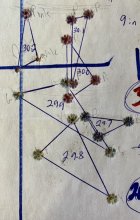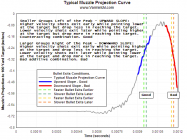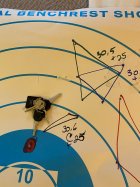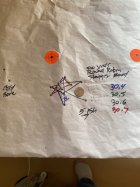Dave Way
Enjoy this site? Become a member.
600 yard test. Do you call 29.7, 29.8 and 29.9 a flat spot? I couldn’t tell you the average velocity. I couldn’t tell you the ES. I couldn’t tell you the SD. I rarely chronograph.
What I can tell you is I absolutely love it when a lower powder charge impacts higher on the target than a higher powder charge does. I’ll pick it every single time. The target is all I really need. I do call it a flat spot, and 29.7 shot a record aggregate at 600 yard Nationals last year.

Dave.
What I can tell you is I absolutely love it when a lower powder charge impacts higher on the target than a higher powder charge does. I’ll pick it every single time. The target is all I really need. I do call it a flat spot, and 29.7 shot a record aggregate at 600 yard Nationals last year.

Dave.















